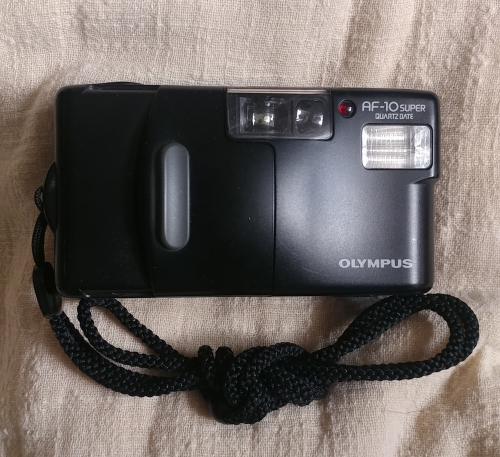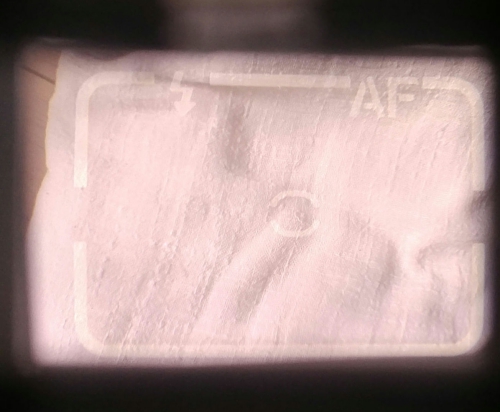

Features
Lens: 35mm f/3.5 focuses 0.7m~Infinity
Shutter: two-bladed, 1/45~
Meter: Center-weighted?
Autofocus: 5 AF points, IR
Viewfinder: _%, AF/Flash indicators
ISO: _~800, defaults to 50
Flash modes: Auto/Fill in/Off
Flash Range: 4.5m/100ISO and 9m/400ISO
Battery: AAA X2 or CRA123A
Weight: 210g
Production: _
Sold for ¥39,300 (1987?), $_ (2021)
Purchased for $15 (2020)
Auto exposure film cameras are strange. They run contradictory to my reasons for shooting film by depriving you of any control. As such, they attract a distinctly different type of people, those who love the flaws and character of film pictures before any sort of objective r*dditor judgements. Old B&W; street photographers exploited the hyperfocal distance of their 35mm lenses, the range in distances at which subjects are in focus. With this they were able to take snapshots on manual focus cameras with great speed. And this sort of spontinaety can be seen with point-and-shoot cameras. They're fleeting, fun moments captured with unsubtle flashes and grain. Think party cameras. And so auto-exposure cameras feel liberating, when the allure of dials and needle light meters start to feel restricting. When all you need to think about is composition when looking through a viewfinder those preoccupations disappear.
The AF-10 isn't a special camera. It has 5 (five) focus points. The lens' max aperture is 3.5. It's not weathersealed. The body lacks a manual rewind button. If anything the greatest allure is that it uses common AAA batteries. And despite all these shortcomings they ultimately don't matter. It's fun.
History
It's got no history. It's a consumer-grade camera for family vacations to florida, probably living in between Coppertone and company-branded bucket hats.
Handling/Features

 It's a nice size. Not a brick like the AF-1. The sliding clamshell protects the lens and saves batteries, and replaces the fumbling of an on/off button. As opposed to the vanilla AF-10 this one has flash controls which adds a ton of utility to an otherwise limited camera. The clamshell automatically sets the flash settings to auto, a bit of a nuisance when taking creepshots with 100 speed film.
It's a nice size. Not a brick like the AF-1. The sliding clamshell protects the lens and saves batteries, and replaces the fumbling of an on/off button. As opposed to the vanilla AF-10 this one has flash controls which adds a ton of utility to an otherwise limited camera. The clamshell automatically sets the flash settings to auto, a bit of a nuisance when taking creepshots with 100 speed film.

There is a case to be made that a camera like this could complement a full-size SLR or rangefinder. It's light and quick with a 35mm lens, meaning it can fill some roles difficult with a 50mm manual camera. This camera is the reason why I've largely ceased using the Zuiko 35mm f/2.8 on my OM-4; why bring an extra lens when you can bring an extra camera? They even weigh the same even when the AF-10 is loaded with a roll of film.
Performance
The AF struggles in low-light like many other AF cameras of this era. Sharpness is good enough despite lacking Zuiko branding.
Conclusion
2021
(∩`-´)⊃━☆゚.*・。゚ back to top ⤴
